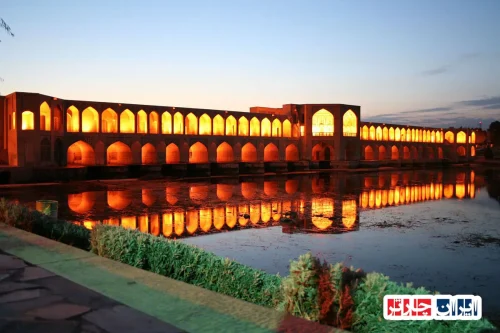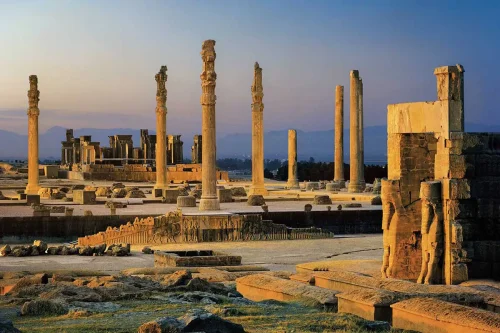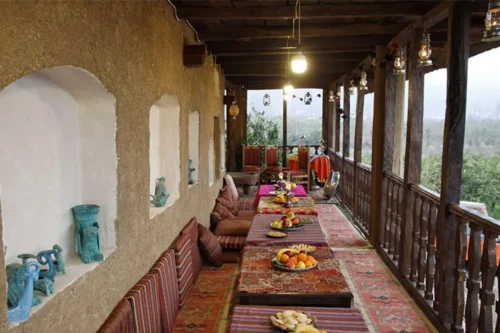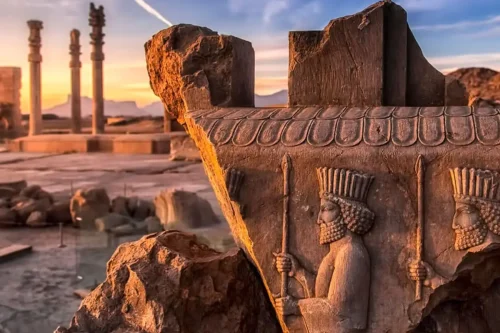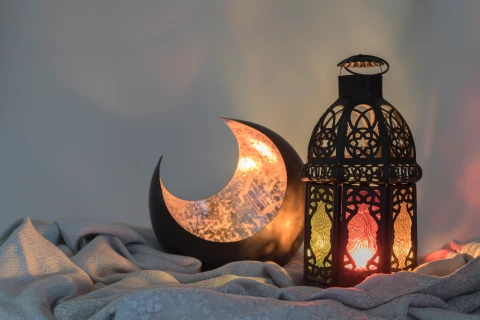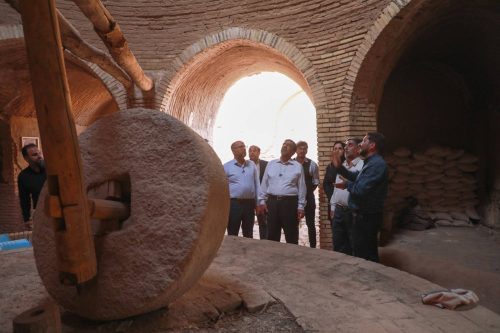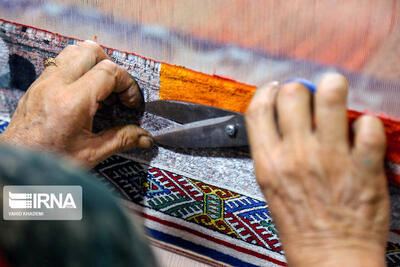News Source : https://www.irna.ir/news/85651596/%D9%85%D8%B9%D8%A7%D9%88%D9%86-%D9%88%D8%B2%D8%A7%D8%B1%D8%AA-%D9%85%DB%8C%D8%B1%D8%A7%D8%AB-%D9%81%D8%B1%D9%87%D9%86%DA%AF%DB%8C-%D8%AB%D8%A8%D8%AA-%D8%AC%D9%87%D8%A7%D9%86%DB%8C-%D9%85%DB%8C%D8%B1%D8%A7%D8%AB-%D9%87%D9%86%D8%B1%DB%8C-%D8%A7%DB%8C%D8%B1%D8%A7%D9%86-%D9%85%D8%B3%D9%88%D9%88%D9%84%DB%8C%D8%AA-%D8%B2%D8%A7%D8%B3%D8%AA
Deputy Minister of Cultural Heritage: Global Registration of Iran’s Artistic Heritage is a Responsibility
The Deputy of Handicrafts and Traditional Arts at the Ministry of Cultural Heritage, Tourism, and Handicrafts announced that the global registration of Iran’s artistic heritage plays a vital role in preserving and safeguarding the artistic heritage of this land. He added that the global registration of Iran’s artistic heritage is not only a symbol of national pride but also a duty for us to preserve these cultural treasures for future generations. This great responsibility requires us to adopt comprehensive and coordinated policies in the field of preservation and enhancement of artistic heritage.
Furthermore, the Deputy Minister explained that the global registration of Iran’s artistic heritage allows us to introduce our handicrafts and traditional arts on an international level and defend against cultural invaders’ rights. He emphasized the importance of collaboration with international institutions and organizations, stating that it helps us preserve Iran’s artistic heritage in the best possible way through knowledge exchange and modern technologies.
Moreover, in recent ceremonies, traditional arts activists have not been overlooked as everyone strives to ensure that this valuable heritage is passed on to future generations. The Deputy Minister of Cultural Heritage emphasized that the global registration of Iran’s artistic heritage is a responsibility and that through collective thinking and collaboration, we can create a bright future for Iran’s traditional arts.
The Importance of Global Recognition of Iran’s Artistic Heritage
The global recognition of Iran’s artistic heritage plays a vital role in preserving and promoting the culture and art of this country. This endeavor not only serves as a national privilege but also imposes a great responsibility on the Deputy Ministry of Cultural Heritage to ensure that these valuable treasures are preserved for future generations. Registering Iranian arts globally helps in enhancing international awareness and protecting it from various threats.
The Role of the Deputy Ministry of Cultural Heritage in Global Registration
The Deputy Ministry of Cultural Heritage, with precise leadership and coordination, guides the process of globally registering Iran’s artistic heritage. This responsibility includes evaluating works, collaborating with international organizations, and drafting protective policies. Through continuous efforts, the Deputy Ministry ensures that Iranian traditional arts are recognized worldwide and maintain their status as unique heritage.
Protective Policies for Traditional Arts
Drafting and implementing protective policies is one of the primary duties of the Deputy Ministry of Cultural Heritage. These policies include financial support, education and training of artists, and the establishment of necessary infrastructures for preserving artworks. By adopting such policies, the Ministry of Cultural Heritage ensures that Iran’s traditional arts remain safeguarded from destruction and oblivion, and achieve greater prosperity.
International Cooperation in Promoting Artistic Heritage
Cooperation with international entities and organizations is one of the effective means of promoting Iran’s artistic heritage. The Deputy Ministry of Cultural Heritage, through the exchange of knowledge and modern technologies, can benefit from global experiences and introduce Iranian arts in the best possible manner. These collaborations also help protect Iran’s artistic heritage on a global level.
Challenges of Global Registration of Iranian Arts
The global registration of Iranian arts encounters numerous challenges that require ongoing efforts and cooperation. Among these challenges are securing financial resources, proper management of artworks, and countering claims by other countries regarding the authenticity of Iranian arts. The Deputy Ministry of Cultural Heritage overcomes these challenges with precise planning and appropriate strategies to achieve successful global registration.
The Impact of Global Registration on Handicrafts
The global recognition of Iran’s artistic heritage positively impacts the country’s handicrafts. This initiative increases awareness and demand for handicraft products, offering new economic opportunities for artists and craftsmen. With global registration, Iran’s traditional handicrafts can have greater access to international markets and consolidate their position globally.
Preserving Artistic Heritage for Future Generations
Preserving artistic heritage for future generations is one of the main priorities of the Deputy Ministry of Cultural Heritage. This involves carefully maintaining artworks, educating a new generation of artists, and creating an environment conducive to the preservation and promotion of traditional arts. Through protective measures, the Ministry of Cultural Heritage ensures that Iran’s artistic heritage is passed on to the future in the healthiest way possible.
The Role of Modern Technologies in Preserving Artistic Heritage
The use of modern technologies in preserving and maintaining Iran’s artistic heritage is of special significance. The Deputy Ministry of Cultural Heritage, by utilizing advanced technologies, can enhance the process of global registration and the protection of artworks. These technologies include three-dimensional scanning, digitizing works, and using data management systems, which help in the precise and comprehensive preservation of artistic heritage.
Development Programs for Iran’s Artistic Heritage
By drafting and implementing artistic heritage development programs, the Deputy Ministry of Cultural Heritage seeks to enhance the quality and scope of Iran’s traditional arts. These programs include development projects, support for local artists, and the promotion of traditional arts marketing. Through these measures, the Ministry of Cultural Heritage ensures that Iran’s traditional arts are on a path of prosperity and excellence, holding a special position globally.
FAQs
- What is the purpose of globally registering Iranian arts?
- The global registration of Iranian arts is conducted to honor and preserve the artistic heritage, highlighting the Ministry of Cultural Heritage’s responsibility in safeguarding these arts.
- What has the Deputy Ministry of Cultural Heritage stated about the importance of global registration of Iranian arts?
- They have stated that the global registration of Iranian arts is more than a privilege; it is a responsibility as we are obliged to preserve and maintain them.
- What did Maryam Jalali express during the International Geographical Marking Commemoration ceremony?
- She expressed that it’s time to step beyond merely describing opportunities or shortcomings and to connect the past heritage with current knowledge and technologies to create a brighter future for the country.
- What is the National Handicraft Development Document and why is it important?
- The National Handicraft Development Document is a comprehensive program that identifies the main issues in the handicraft sector and dictates policies and actions needed to address them. This document is crucial for the development of the country’s handicraft industry.
- What are the main goals of the National Handicraft Development Document?
- The main goals are to identify the key issues in the handicraft sector and to plan policies and large-scale actions to address them, aiming for the development of this sector as part of an identity-based economy.
- How does Isfahan contribute to the development of Iranian handicrafts?
- Isfahan, with its famous arts such as engraving and Isfahan music, plays a significant role in handicraft development and efforts are made to integrate these arts within the broader context of development.
- What actions are being taken for the revival and modern adaptation of the past?
- Through interpreting and explaining past heritage alongside modern technologies, revival and modern adaptation are carried out. Additionally, new laws and regulations are enacted to support artists.
- What role does the Isfahan Chamber of Commerce play in the development of handicrafts?
- The Isfahan Chamber of Commerce actively supports and collaborates to aid the development of handicrafts in this region, promoting it as one of the artistic hubs of the country.
- What programs are there for implementing the National Handicraft Development Document?
- Programs include drafting legal regulations, coordinating with the Islamic Consultative Assembly for law enactment, and budget planning for policy implementation.
- What is the importance of the Artist Support Law and how is it implemented?
- This law is designed to support artists. With the drafting of new regulations and collaboration with the Islamic Consultative Assembly, efforts are made to implement these laws since 2017.
- Why is the budget proposal in the parliament important?
- The budget proposal is essential for financing programs and policies related to the development of handicrafts and tourism, and its approval can facilitate a change in approach towards these sectors.
- How do they plan to support the ecosystem of handicrafts as an identity-based economy?
- By implementing the National Handicraft Development Document and creating coordination among various entities, they aim to support the handicraft ecosystem as a foundation for the country’s identity-based economy.
- What roles are involved in the development of handicrafts in Isfahan province?
- The Governor of Isfahan, the Chamber of Commerce, the Handicraft Union, and the people’s representatives in the Islamic Consultative Assembly all play key roles in the development of handicrafts in this province.
- How can they transform the Isfahan region into a cultural powerhouse?
- By utilizing all artistic creative industry tools and fostering collaboration among various institutions, they aim to present Isfahan as a model of Iran’s cultural power.
- What changes are expected in the approach to handicrafts and tourism?
- A shift in approach to handicrafts and tourism as an identity-based economy can aid in the advancement and progress of these sectors, playing a vital role in the country’s economy.
- How are the past and future of handicrafts linked?
- The past is considered the roots of handicrafts and with revival and modern adaptation, these crafts continue to grow and advance.


